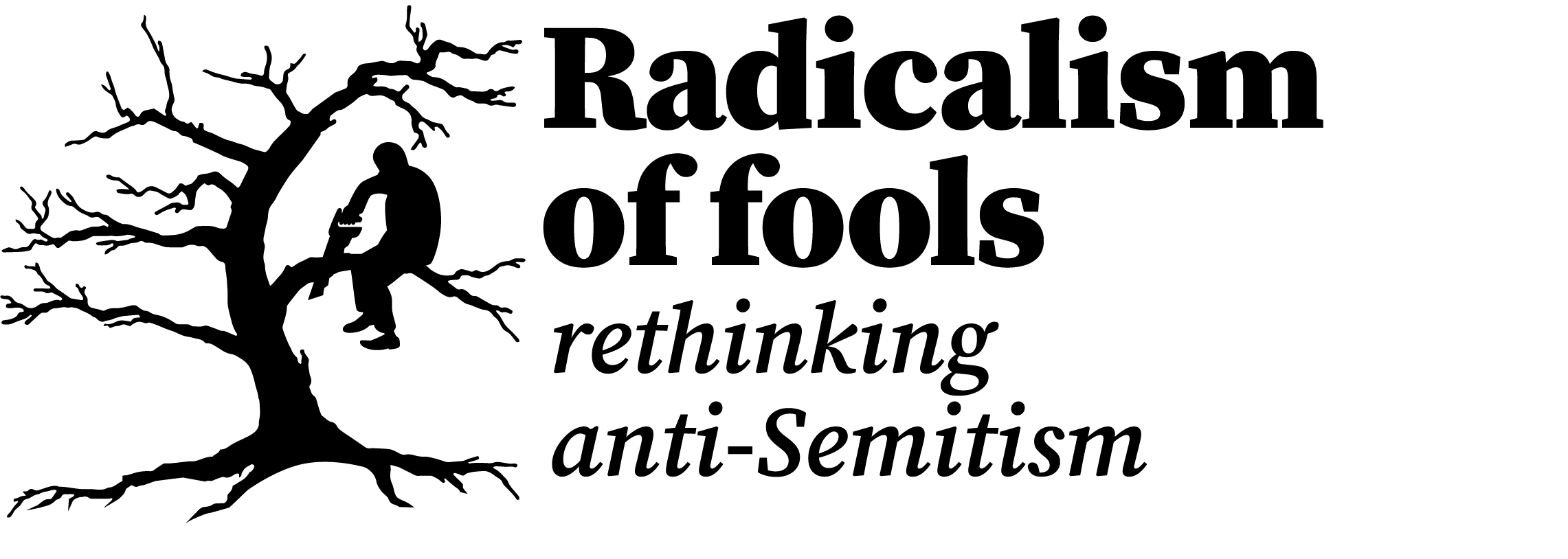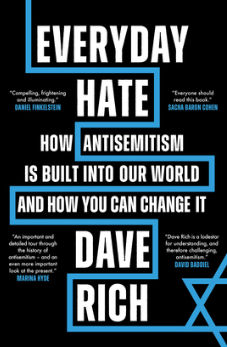Dave Rich’s book on that thorniest of subjects, anti-Semitism, has already received many plaudits including glowing testimonials from several Anglo-Jewish luminaries. It does indeed merit much praise but it should also be recognised that it also has serious weaknesses.
Given that this is likely to be the definitive account of anti-Semitism in Britain for years to come it deserves a relatively lengthy examination. Its proposals to tackle the scourge also demand careful attention.
The author has worked for the Community Security Trust, a charity that protects the Jewish community, for almost 30 years. He is therefore particularly well versed on the subject of contemporary anti-Semitism in Britain. It is also to his credit that he does not hesitate to delve into history when it helps shed light on current debates.
On the positive side, the book works well as a primer for those who know little or nothing about anti-Semitism. It provides a lucid introduction to such flawed notions as Jews as Christ killers and the blood libel. It also explores stereotypes such as the link of Jews to finance and the idea that they are all rich. Those who follow the subject will probably already be familiar with these but it is important to remember that most people are not.
The focus is mainly on Britain so readers will learn about anti-Semitic tropes in the works of Geoffrey Chaucer, Charles Dickens and William Shakespeare. But the book also covers the discussions of the Holocaust and of Israel as far as they relate to British anti-Semitism. It would be unreasonable to expect detailed examinations of either subject as they are huge topics in themselves.
A particularly strong section in the book explains why the Holocaust was not simply another act in humanity’s grisly history of mass violence. The conscious goal of its perpetrators was to kill every single Jew. In that respect it was not akin to conflicts over land or even the bloodiest of civil wars. Although the Nazis ended up slaughtering six million Jews they evidently had plans to kill all 11 million who lived in Europe. That included in places they did not end up invading such as Britain and Ireland. The murder of Jews was not a matter of Jews being inadvertently caught up in a violent conflict but the result of the Nazi’s deliberate intent.
The book’s main weaknesses stem from its underestimation of the discontinuities in the history of anti-Semitism. Dave Rich sees it as a more-or-less continuous narrative albeit with some twists and turns along the way. However, to truly understand anti-Semitism it is necessary to grapple with how it has fundamentally changed in character over time.
For example, it is true, as Rich maintains, that some ancient tropes are often recycled to the present day. The idea of the blood libel - that Jews would ritually murder Christian children for their blood – was already apparent in 1144 in Norwich. Back then Jews were blamed for the murder of a 12-year-old boy. Yet the theme of Jews as child murderers frequently recurs in anti-Semitic propaganda including in the way anti-Israel activists often portray Israel.
Nevertheless, as the likes of Hannah Arendt in The Origins of Totalitarianism (first published in 1951) and Kenan Malik in Not So Black and White (2023) have argued, that the apparent continuities belie huge differences over time. Until the nineteenth century European Jews were generally relatively isolated from the rest of society. Until then Jews were regarded as superstitious and backward by many Christians. Religious Jew hatred existed but it was different in character from the racially-charged anti-Semitism that was to come.
Jews came instead, with the coming of emancipation, to symbolise modernity and cosmopolitanism – qualities that a reactionary section of society loathes. It was, paradoxically, during the time when equality was becoming accepted that what became known as modern anti-Semitism emerged. In its fully developed form it took on a genocidal character. It was not just about killing individual or even groups of Jews but systematically eliminating the Jewish people.
To be fair to Rich he does realise there is a distinction between religious jew-hatred in medieval times and modern anti-Semitism from the nineteenth century onwards. However, he underestimates the significance of the fundamental break between the two. The frequent use of common tropes across different time periods obscures huge differences in the social context.
This weakness has important contemporary implications. It means there is insufficient sensitivity to the changing forms of anti-Semitism. This is particularly apparent in the final chapter in which Rich discusses ways of tackling the problem. There, despite nodding references, he fails to focus on two of the greatest threats to Jews today.
The first of these is identity politics. This is the idea that the most important characteristic of any individual is the identity group to which they belong. Examples of such groups include different ethnic groups, gays and Jews. Naturally it is possible to belong to more than one group so there is also talk of “intersectionality” when two or more categories overlap.
Supporters of identity politics – who generally view themselves as anti-racist - see western societies as hierarchical with those enjoying white privilege at the top. Simply having white skin is seen as giving individuals supremacy over the rest of society. This is an outlook that is nowadays widely taught in both American and British schools.
From this starting point it is a short step to see Jews as beneficiaries of such privilege. Indeed Jews are commonly seen as hyper-privileged and therefore hyper-white in this world view. Old tropes about wealthy Jews manipulating society for their benefit are resurrected in a new form.
Rich’s hope instead is that Jews can make common cause with anti-racist campaigns. He fails to recognise that most self-declared anti-racist nowadays – as opposed to in earlier generations – buy into identity politics. They are therefore more likely to predisposed to anti-Semitism than opposed to it. They will typically revile far right forms of anti-Semitism but that will not stop them purveying the new identitarian form.
The second key omission is Islamism. That is hostility to Jews based on an Islamised form of radical politics. The reluctance to discuss this is understandable – it is a complex phenomenon and its critics risk being branded Islamophobic – but it should not be ignored. It is another one of the main threats facing Jews in Britain today.
Rich rejected these criticisms when I put them to him at a meeting on his book at London's Wiener library. He said the book did tackle these topics but the references were scattered throughout the book rather than tackled in distinct sections. That was in turn, he argued, a function of the way the chapters were organised to tackle particular themes.
I did not find this defence convincing. It is true that there are a few scattered references to Islamism. However, that does not seem to me nearly sufficient to challenge the threat it poses today. As for identity politics there is barely any mention of it.
Everyday Hate does a good job as far as it goes but it does not go nearly far enough. For those wanting a primer on the subject it is well worth reading. But anyone wanting to effectively challenge anti-Semitism in contemporary Britain must be willing to tackle identity politics and Islamism head on.
Everyday Hate: How Antisemitism Is Built Into Our World And How You Can Change It. Biteback 2023.

